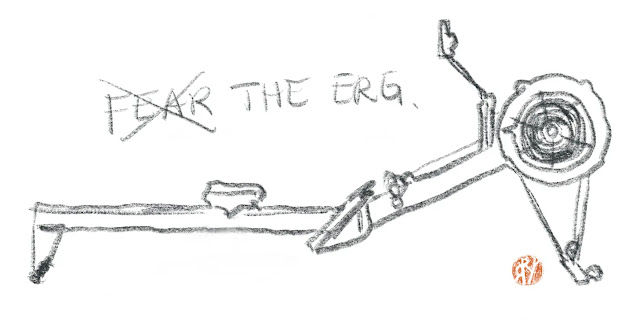Coaches' Corner: Swing
One of the most important, rhythmic sequences in the stroke is the movement of the upper body from the finish position through to the body-set position.
The video above, published by Everett Rowing Association, is a good example of the benefits of good swing. The stern four of this crew have gone on to prominence in the collegiate rowing ranks, and the eight move very well together out of the bow.
The video above, published by Everett Rowing Association, is a good example of the benefits of good swing. The stern four of this crew have gone on to prominence in the collegiate rowing ranks, and the eight move very well together out of the bow.
Swing is easy to work on during the winter, as is team-wide uniformity of swing, by lining up the ergs at your training session and having the rowers do their steady state training together. If your team can match their hand and body movements as they establish good body position on land, it will solve a great deal of issues when you take to the water once again in the spring.
Swing begins with good posture at the release.
The rower must be sitting tall, making sure that the ribcage is not collapsed over the hips. The abs must be engaged in this position, so that they can easily initiate the movement out of the bow. If the rower is hunched, the movement will become more complicated: rather than simply using the abs to draw the body forward, the rower will have to first sit up, then rock, making two movements out of one, and slowing the swing by damaging the flow out of the bow.
From this tall position, with the abs engaged, the first movement is performed by the hands, which extend straight out from the release, as though on a table. Once the arms are extended, the hip-flexors and the abs draw the body over the hips until it reaches the position it will maintain as the legs are drawn up to the chest. This position should mirror the body position at the release—swing should be distributed evenly on either side of the hips. A metronome is a useful image. The core continues to be engaged, as the same tall posture must be maintained on either side of the hips to achieve maximum efficiency. The feeling for the rower can be described as a shift of the weight from the tailbone onto the feet. Once the weight is placed on the feet, the set can be controlled much more easily.
From this tall position, with the abs engaged, the first movement is performed by the hands, which extend straight out from the release, as though on a table. Once the arms are extended, the hip-flexors and the abs draw the body over the hips until it reaches the position it will maintain as the legs are drawn up to the chest. This position should mirror the body position at the release—swing should be distributed evenly on either side of the hips. A metronome is a useful image. The core continues to be engaged, as the same tall posture must be maintained on either side of the hips to achieve maximum efficiency. The feeling for the rower can be described as a shift of the weight from the tailbone onto the feet. Once the weight is placed on the feet, the set can be controlled much more easily.
The key is sequencing properly out of the bow.
The proper order ensures that the body and hands will be in the right place as the rower begins to draw the knees up to his or her chest. Proper posture coupled with the removal of any extraneous movements will maintain the boat speed as well as the set. Level hands and early establishment of the body position will help to simplify the catch, and can be monitored during the winter by means of coaching, mirrors and video.
Don't let anyone tell you that you can't teach technique on the erg—land training can be equally useful for ingraining the proper sequence as water training, and if this sequence is learned well, then the process of blade placement will come more easily to your rowers when the ice melts.
-RR
-RR



